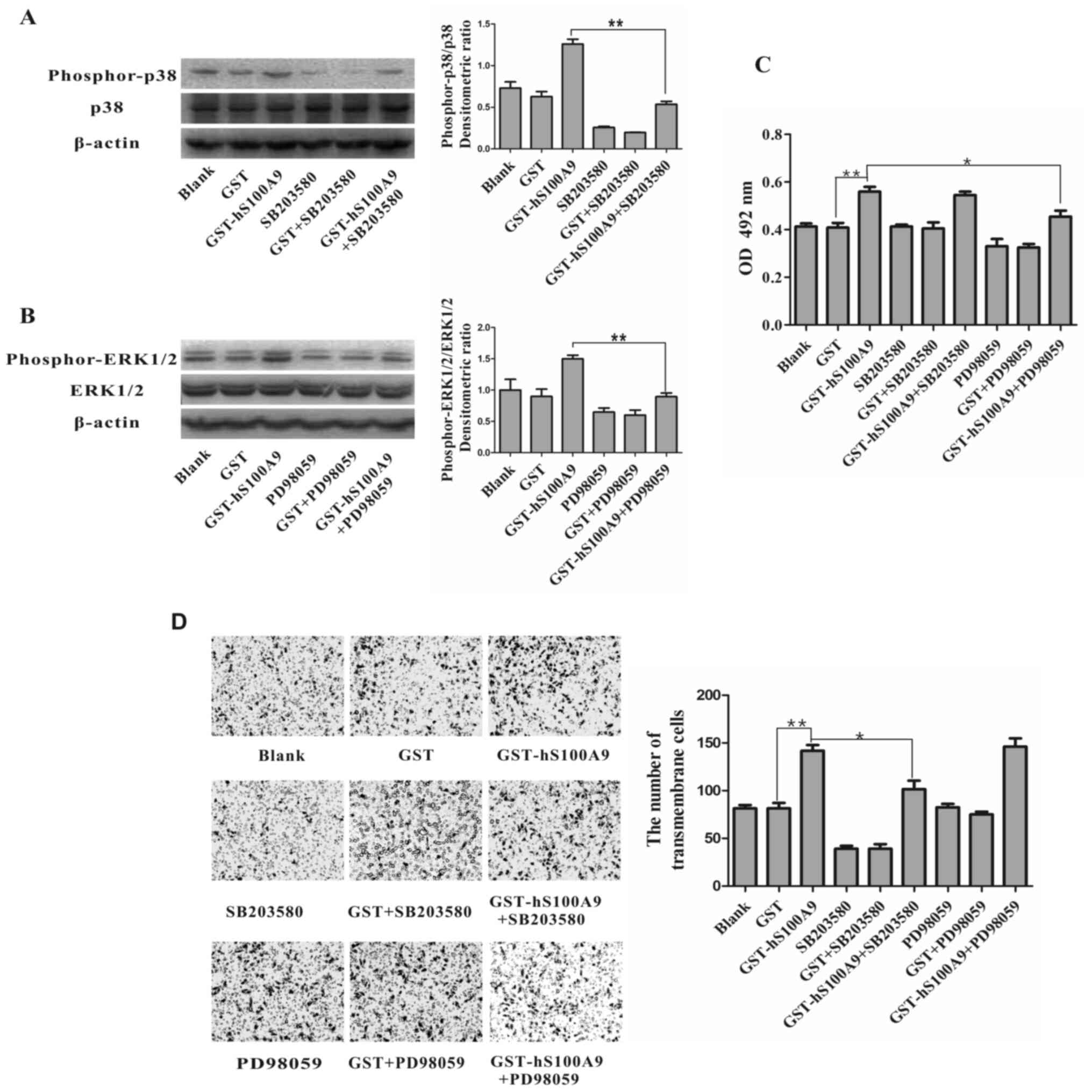Spandidos Publications style
Wu R, Duan L, Ye L, Wang H, Yang X, Zhang Y, Chen X, Zhang Y, Weng Y, Luo J, Luo J, et al: [Corrigendum] S100A9 promotes the proliferation and invasion of HepG2 hepatocellular carcinoma cells via the activation of the MAPK signaling pathway. Int J Oncol 62: 46, 2023.
APA
Wu, R., Duan, L., Ye, L., Wang, H., Yang, X., Zhang, Y. ... Zhou, L. (2023). [Corrigendum] S100A9 promotes the proliferation and invasion of HepG2 hepatocellular carcinoma cells via the activation of the MAPK signaling pathway. International Journal of Oncology, 62, 46. https://doi.org/10.3892/ijo.2023.5494
MLA
Wu, R., Duan, L., Ye, L., Wang, H., Yang, X., Zhang, Y., Chen, X., Zhang, Y., Weng, Y., Luo, J., Tang, M., Shi, Q., He, T., Zhou, L."[Corrigendum] S100A9 promotes the proliferation and invasion of HepG2 hepatocellular carcinoma cells via the activation of the MAPK signaling pathway". International Journal of Oncology 62.4 (2023): 46.
Chicago
Wu, R., Duan, L., Ye, L., Wang, H., Yang, X., Zhang, Y., Chen, X., Zhang, Y., Weng, Y., Luo, J., Tang, M., Shi, Q., He, T., Zhou, L."[Corrigendum] S100A9 promotes the proliferation and invasion of HepG2 hepatocellular carcinoma cells via the activation of the MAPK signaling pathway". International Journal of Oncology 62, no. 4 (2023): 46. https://doi.org/10.3892/ijo.2023.5494















